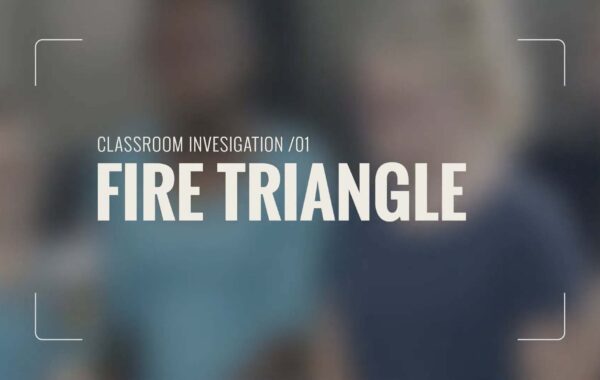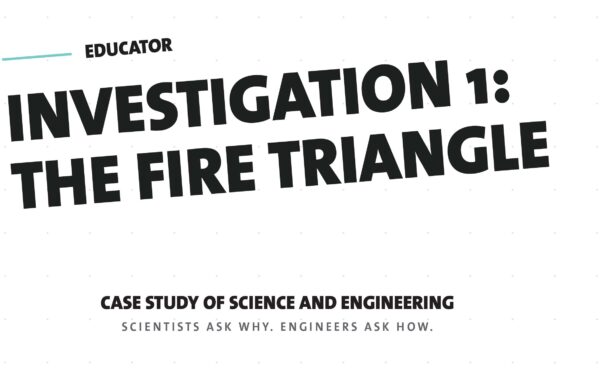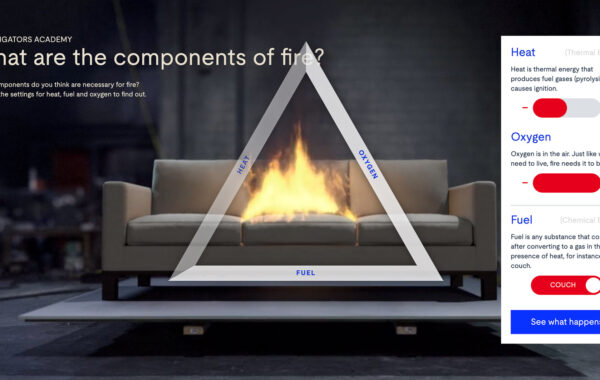Related Resources

Video
The Fire Triangle

Document
The Fire Triangle: Teacher Guide

Guiding Question:
What is the effect of limiting one leg of the fire triangle?
Why do we need to answer this question?
Understanding the fire triangle is critical to fire fighting and fire investigation. Firefighters use this knowledge to extinguish a fire. Investigators use this knowledge to identify where a fire could have started, and to look for clues left behind by objects.
How will we answer this question?
We are working to update our investigations to better represent three-dimensional teaching practices. We trust teachers to consider the procedures in this investigation and modify the resource to meet the needs of students in their classrooms.
Be sure to explore the video showing this classroom investigation and the related teacher guide.